A Comprehensive Guide to Outdoor Safety Work Clothes Introduction: Outdoor working environments present unique challenges and hazards that necessitate the use of specialized safety clothing. In order to protect workers and ensure their utmost safety, employers must prioritize the provision of appropriate outdoor safety work clothes. This article aims to provide a comprehensive overview of outdoor safety work clothes, highlighting their crucial role, key features to consider, and their benefits. I. Importance of Outdoor Safety Work Clothes 1. Protection against Environmental Hazards: – Exposure to extreme temperatures, rain, snow, and wind requires protective clothing to maintain optimal body temperature and prevent weather-related illnesses. – Outdoor work often includes exposure to harmful UV rays, necessitating the use of protective clothing with added sun protection properties. 2. Protection from Physical Hazards: – Outdoor work sites are prone to risks such as falling objects, sharp materials, and potential collisions, making protective clothing with impact resistance essential. – High visibility workwear is crucial for workers in outdoor settings, ensuring that they are easily identifiable, reducing the risk of accidents involving vehicles or heavy machinery. II. Key Features of Outdoor Safety Work Clothes 1. Durability and Strength: – Outdoor work clothes should be constructed from sturdy, tear-resistant, and long-lasting materials such as reinforced fabrics to withstand the rigors of the outdoor environment. – Reinforced stitching, reinforced elbows, and knee pads enhance the durability and longevity of the garments. 2. Weather Resistance: – Outdoor safety work clothes should provide effective insulation, breathability, and moisture-wicking properties to keep workers comfortable in different climatic conditions. – Waterproof or water-resistant features are essential to prevent workers from getting wet and retaining moisture, which can lead to discomfort and potential health issues. 3. High Visibility: – Brightly colored workwear with reflective tape is crucial for workers who are exposed to moving vehicles or machinery, enabling increased visibility and reducing the risk of accidents. – ANSI-certified high visibility garments ensure compliance with safety regulations and standards.
safety ware
 4. Protection against UV Rays: – Outdoor workers are highly susceptible to sun exposure and its damaging effects. UV-protective clothing with UPF ratings offers an additional layer of protection against harmful rays. – Features such as collars, long sleeves, and wide-brimmed hats provide extended coverage, protecting workers from sunburns and skin cancer risks. III. Types of Outdoor Safety Work Clothes 1. Protective Clothing: – Flame-resistant (FR) garments are vital for workers exposed to fire or electrical hazards, offering protection against flames, arc flashes, and electric shock. – Chemical-resistant clothing is essential in industries where workers are exposed to hazardous chemicals, providing a barrier against potential spills or contact. 2. Cold Weather Workwear: – Insulated jackets, thermal base layers, waterproof boots, and gloves are essential for workers who face freezing temperatures or work in cold environments. – Layering options allow for flexibility, ensuring warmth and comfort as outdoor conditions fluctuate. 3. High Visibility Workwear: – High visibility vests, jackets, and coveralls improve worker visibility in low light conditions or when working near moving vehicles. – Innovative LED lighting technology integrated into safety vests further enhances visibility, especially during nighttime work. 4. Performance Outdoor Workwear: – Technical garments designed to enhance mobility, breathability, and durability are ideal for physically demanding outdoor work. – Moisture-wicking materials and ventilation features help manage perspiration and keep workers dry and comfortable. IV. Benefits of Outdoor Safety Work Clothes 1. Enhanced Safety: – Outdoor safety work clothes significantly reduce the risk of workplace accidents, injuries, and illnesses, promoting a safer working environment. – Compliance with safety regulations ensures legal and ethical obligations are met, protecting both workers and employers. 2. Increased Productivity: – Comfortable and well-fitted outdoor work clothes contribute to improved productivity by minimizing physical discomfort and distractions. – Adequate protection from environmental hazards allows workers to focus on their tasks without compromising their safety. 3. Employee Morale and Satisfaction: – Prioritizing the provision of suitable outdoor safety work clothes demonstrates a commitment to employee welfare, enhancing job satisfaction and fostering a positive work culture. – Comfortable and well-protected workers are more likely to feel valued and motivated, resulting in increased job loyalty and retention.
4. Protection against UV Rays: – Outdoor workers are highly susceptible to sun exposure and its damaging effects. UV-protective clothing with UPF ratings offers an additional layer of protection against harmful rays. – Features such as collars, long sleeves, and wide-brimmed hats provide extended coverage, protecting workers from sunburns and skin cancer risks. III. Types of Outdoor Safety Work Clothes 1. Protective Clothing: – Flame-resistant (FR) garments are vital for workers exposed to fire or electrical hazards, offering protection against flames, arc flashes, and electric shock. – Chemical-resistant clothing is essential in industries where workers are exposed to hazardous chemicals, providing a barrier against potential spills or contact. 2. Cold Weather Workwear: – Insulated jackets, thermal base layers, waterproof boots, and gloves are essential for workers who face freezing temperatures or work in cold environments. – Layering options allow for flexibility, ensuring warmth and comfort as outdoor conditions fluctuate. 3. High Visibility Workwear: – High visibility vests, jackets, and coveralls improve worker visibility in low light conditions or when working near moving vehicles. – Innovative LED lighting technology integrated into safety vests further enhances visibility, especially during nighttime work. 4. Performance Outdoor Workwear: – Technical garments designed to enhance mobility, breathability, and durability are ideal for physically demanding outdoor work. – Moisture-wicking materials and ventilation features help manage perspiration and keep workers dry and comfortable. IV. Benefits of Outdoor Safety Work Clothes 1. Enhanced Safety: – Outdoor safety work clothes significantly reduce the risk of workplace accidents, injuries, and illnesses, promoting a safer working environment. – Compliance with safety regulations ensures legal and ethical obligations are met, protecting both workers and employers. 2. Increased Productivity: – Comfortable and well-fitted outdoor work clothes contribute to improved productivity by minimizing physical discomfort and distractions. – Adequate protection from environmental hazards allows workers to focus on their tasks without compromising their safety. 3. Employee Morale and Satisfaction: – Prioritizing the provision of suitable outdoor safety work clothes demonstrates a commitment to employee welfare, enhancing job satisfaction and fostering a positive work culture. – Comfortable and well-protected workers are more likely to feel valued and motivated, resulting in increased job loyalty and retention.
Specifications of safety ware
 Conclusion: Outdoor safety work clothes play a critical role in protecting workers from environmental and physical hazards encountered in outdoor work settings. Employers must prioritize the provision of durable, weather-resistant, high visibility, and UV-protective workwear to ensure the safety and well-being of their workforce. By investing in appropriate safety clothing, employers can enhance workplace safety, increase productivity, and establish a positive work environment that prioritizes employee welfare.I. The Role of Outdoor Safety Work Clothes in Workplace Safety Outdoor working environments pose unique challenges and hazards that require extra precautions to ensure the safety and well-being of workers. Outdoor safety work clothes play a crucial role in mitigating these risks and protecting workers from the elements, physical hazards, and potential accidents. 1. Protection against Environmental Hazards: Outdoor work often involves exposure to extreme temperatures, rain, snow, wind, and harmful ultraviolet (UV) rays. In order to maintain optimal body temperature and prevent weather-related illnesses, it is essential to provide workers with appropriate protective clothing. This includes insulated jackets, thermal base layers, waterproof boots, and gloves for cold weather conditions. Additionally, clothing with moisture-wicking and breathability features help manage perspiration and keep workers comfortable during physically demanding tasks. Outdoor workers are also at a higher risk of sunburns and long-term skin damage due to prolonged sun exposure. UV-protective clothing with UPF ratings provides an added layer of defense against harmful UV rays. These garments often include features like collars, long sleeves, and wide-brimmed hats to offer extended protection to exposed areas. 2. Protection from Physical Hazards: Outdoor work sites commonly involve risks associated with falling objects, sharp materials, and potential collisions. To protect workers against these physical hazards, outdoor safety work clothes should incorporate features such as reinforced fabrics, reinforced stitching, and reinforced pads at critical areas like elbows and knees. These measures enhance the durability and longevity of the garments, ensuring they can withstand the rigors of the outdoor environment. High visibility workwear is another crucial component of outdoor safety clothing. Brightly colored garments with reflective tape significantly improve worker visibility, particularly in low light conditions or when working near moving vehicles or machinery. By increasing visibility, the risk of accidents and collisions can be significantly reduced. II. Key Features to Consider in Outdoor Safety Work Clothes When selecting outdoor safety work clothes for employees, several key features should be taken into consideration. These features ensure that the garments provide optimal protection, durability, and comfort in the specific outdoor working environment.
Conclusion: Outdoor safety work clothes play a critical role in protecting workers from environmental and physical hazards encountered in outdoor work settings. Employers must prioritize the provision of durable, weather-resistant, high visibility, and UV-protective workwear to ensure the safety and well-being of their workforce. By investing in appropriate safety clothing, employers can enhance workplace safety, increase productivity, and establish a positive work environment that prioritizes employee welfare.I. The Role of Outdoor Safety Work Clothes in Workplace Safety Outdoor working environments pose unique challenges and hazards that require extra precautions to ensure the safety and well-being of workers. Outdoor safety work clothes play a crucial role in mitigating these risks and protecting workers from the elements, physical hazards, and potential accidents. 1. Protection against Environmental Hazards: Outdoor work often involves exposure to extreme temperatures, rain, snow, wind, and harmful ultraviolet (UV) rays. In order to maintain optimal body temperature and prevent weather-related illnesses, it is essential to provide workers with appropriate protective clothing. This includes insulated jackets, thermal base layers, waterproof boots, and gloves for cold weather conditions. Additionally, clothing with moisture-wicking and breathability features help manage perspiration and keep workers comfortable during physically demanding tasks. Outdoor workers are also at a higher risk of sunburns and long-term skin damage due to prolonged sun exposure. UV-protective clothing with UPF ratings provides an added layer of defense against harmful UV rays. These garments often include features like collars, long sleeves, and wide-brimmed hats to offer extended protection to exposed areas. 2. Protection from Physical Hazards: Outdoor work sites commonly involve risks associated with falling objects, sharp materials, and potential collisions. To protect workers against these physical hazards, outdoor safety work clothes should incorporate features such as reinforced fabrics, reinforced stitching, and reinforced pads at critical areas like elbows and knees. These measures enhance the durability and longevity of the garments, ensuring they can withstand the rigors of the outdoor environment. High visibility workwear is another crucial component of outdoor safety clothing. Brightly colored garments with reflective tape significantly improve worker visibility, particularly in low light conditions or when working near moving vehicles or machinery. By increasing visibility, the risk of accidents and collisions can be significantly reduced. II. Key Features to Consider in Outdoor Safety Work Clothes When selecting outdoor safety work clothes for employees, several key features should be taken into consideration. These features ensure that the garments provide optimal protection, durability, and comfort in the specific outdoor working environment.
buy safety ware
 1. Durability and Strength: Outdoor work clothes should be constructed from sturdy and tear-resistant materials that can withstand the demands of the outdoors. Reinforced fabrics, such as those made from high-denier nylon or polyester, are preferred for their exceptional durability. Additionally, attention to details like reinforced stitching and double-layered panels at high-wear areas enhances the longevity of the garments, reducing the frequency of replacements and saving costs. 2. Weather Resistance: To effectively protect workers from the elements, outdoor safety work clothes should possess weather-resistant properties. This includes waterproof or water-resistant features to keep workers dry during rain and snowfall. Sealed seams, waterproof zippers, adjustable cuffs, and storm flaps are some of the design elements that contribute to the garments’ ability to repel water effectively. In addition to being weather-resistant, the workwear should also provide proper insulation, breathability, and moisture-wicking properties. This enables optimal temperature regulation and helps manage perspiration, keeping workers comfortable in fluctuating weather conditions. 3. High Visibility: High visibility workwear is essential for outdoor workers who perform tasks near moving vehicles or in areas with reduced visibility. Garments that meet the American National Standards Institute (ANSI) guidelines for high visibility apparel ensure compliance with safety regulations. These garments typically include bright yellow, orange, or lime-green colors, coupled with reflective tape, to enhance visibility in various lighting conditions. 4. UV Protection: Workers exposed to the sun for prolonged periods are susceptible to harmful UV rays. UV-protective clothing with UPF ratings offers an important defense against these rays, reducing the risk of sunburns, skin damage, and long-term health issues. Outdoor safety work clothes with UPF 40+ or higher ratings provide effective protection against harmful UV rays. III. Types of Outdoor Safety Work Clothes There are several types of outdoor safety work clothes available to cater to different work environments and hazards. These types include protective clothing, cold weather workwear, high visibility workwear, and performance outdoor workwear. 1. Protective Clothing: In industries where workers are exposed to fire or electrical hazards, flame-resistant (FR) garments are crucial for their safety. These garments are designed to resist ignition and provide protection against flames, arc flashes, and electric shock. Additionally, chemical-resistant clothing is necessary in environments where workers come into contact with hazardous chemicals, offering a barrier against potential spills or contact. 2. Cold Weather Workwear: Workers in freezing temperatures or cold environments require specialized workwear to ensure their well-being and productivity. Insulated jackets or parkas with thermal linings and weather-resistant shells provide warmth and protection against the cold. Thermal base layers offer additional insulation to keep workers comfortable and prevent hypothermia.
1. Durability and Strength: Outdoor work clothes should be constructed from sturdy and tear-resistant materials that can withstand the demands of the outdoors. Reinforced fabrics, such as those made from high-denier nylon or polyester, are preferred for their exceptional durability. Additionally, attention to details like reinforced stitching and double-layered panels at high-wear areas enhances the longevity of the garments, reducing the frequency of replacements and saving costs. 2. Weather Resistance: To effectively protect workers from the elements, outdoor safety work clothes should possess weather-resistant properties. This includes waterproof or water-resistant features to keep workers dry during rain and snowfall. Sealed seams, waterproof zippers, adjustable cuffs, and storm flaps are some of the design elements that contribute to the garments’ ability to repel water effectively. In addition to being weather-resistant, the workwear should also provide proper insulation, breathability, and moisture-wicking properties. This enables optimal temperature regulation and helps manage perspiration, keeping workers comfortable in fluctuating weather conditions. 3. High Visibility: High visibility workwear is essential for outdoor workers who perform tasks near moving vehicles or in areas with reduced visibility. Garments that meet the American National Standards Institute (ANSI) guidelines for high visibility apparel ensure compliance with safety regulations. These garments typically include bright yellow, orange, or lime-green colors, coupled with reflective tape, to enhance visibility in various lighting conditions. 4. UV Protection: Workers exposed to the sun for prolonged periods are susceptible to harmful UV rays. UV-protective clothing with UPF ratings offers an important defense against these rays, reducing the risk of sunburns, skin damage, and long-term health issues. Outdoor safety work clothes with UPF 40+ or higher ratings provide effective protection against harmful UV rays. III. Types of Outdoor Safety Work Clothes There are several types of outdoor safety work clothes available to cater to different work environments and hazards. These types include protective clothing, cold weather workwear, high visibility workwear, and performance outdoor workwear. 1. Protective Clothing: In industries where workers are exposed to fire or electrical hazards, flame-resistant (FR) garments are crucial for their safety. These garments are designed to resist ignition and provide protection against flames, arc flashes, and electric shock. Additionally, chemical-resistant clothing is necessary in environments where workers come into contact with hazardous chemicals, offering a barrier against potential spills or contact. 2. Cold Weather Workwear: Workers in freezing temperatures or cold environments require specialized workwear to ensure their well-being and productivity. Insulated jackets or parkas with thermal linings and weather-resistant shells provide warmth and protection against the cold. Thermal base layers offer additional insulation to keep workers comfortable and prevent hypothermia.
safety ware + buy and sell
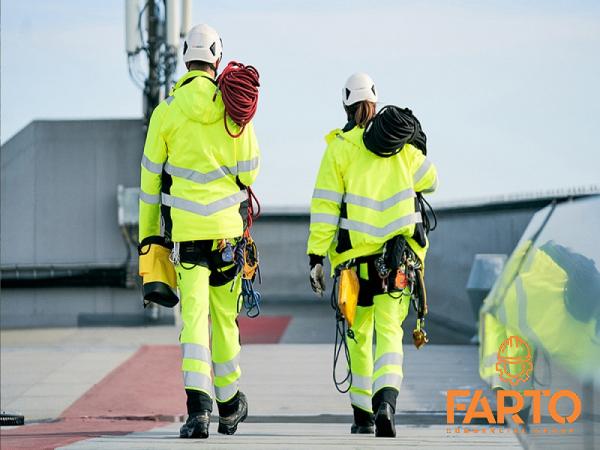 Waterproof and insulated boots, as well as gloves with thermal lining, are also essential to protect extremities from frostbite and maintain dexterity. 3. High Visibility Workwear: High visibility workwear is particularly critical for workers who operate near moving vehicles or machinery, as well as those who work in low light conditions. High visibility vests, jackets, coveralls, and shirts designed with bright colors and retroreflective tape increase visibility, making workers more easily identifiable. This helps to prevent accidents and collisions and ensures compliance with safety regulations. Innovative developments in high visibility workwear include the integration of LED lighting technology. Safety vests equipped with LED lights further enhance visibility, especially during nighttime work. These vests often feature rechargeable batteries and multiple lighting modes, making them highly practical and efficient. 4. Performance Outdoor Workwear: For physically demanding tasks conducted in outdoor environments, performance outdoor workwear is designed to enhance mobility, breathability, and durability. These garments feature flexible and stretchable fabrics, ergonomic designs, and reinforcements at stress points to maximize comfort and range of motion. Moisture-wicking materials and ventilation systems help manage perspiration, keeping workers dry and comfortable throughout the workday. Furthermore, performance workwear often includes a variety of functional pockets and tool holders to keep essential items easily accessible. This eliminates the need for workers to carry additional bags or accessories, increasing their efficiency and productivity. IV. Benefits of Providing Outdoor Safety Work Clothes 1. Enhanced Safety: The provision of suitable outdoor safety work clothes significantly reduces the risk of workplace accidents, injuries, and illnesses. By effectively protecting workers from environmental and physical hazards, employers demonstrate their commitment to employee welfare and maintain a safe working environment. Compliance with safety regulations also ensures legal and ethical obligations are met, mitigating potential liabilities. 2. Increased Productivity: Comfortable and well-fitted outdoor work clothes contribute to improved productivity by minimizing physical discomfort and distractions. When workers are provided with proper protection against the elements and physical hazards, they can concentrate on their tasks without compromising their safety or well-being. This leads to greater focus, efficiency, and work output. 3. Employee Morale and Satisfaction: Prioritizing the provision of suitable outdoor safety work clothes demonstrates a commitment to employee welfare, ultimately enhancing job satisfaction and fostering a positive work culture. Comfortable and well-protected workers are more likely to feel valued and motivated, resulting in increased job loyalty and retention. Additionally, providing employees with high-quality and durable workwear can boost their morale and overall job satisfaction. Conclusion: Outdoor safety work clothes are essential for protecting workers in outdoor environments from environmental and physical hazards. Employers should consider the specific needs of their workforce and provide appropriate garments that prioritize durability, weather resistance, high visibility, and UV protection. By investing in outdoor safety work clothes, employers can enhance workplace safety, increase productivity, and demonstrate a commitment to the well-being of their employees. Ultimately, these measures can create a positive work environment that fosters greater job satisfaction and drives business success.
Waterproof and insulated boots, as well as gloves with thermal lining, are also essential to protect extremities from frostbite and maintain dexterity. 3. High Visibility Workwear: High visibility workwear is particularly critical for workers who operate near moving vehicles or machinery, as well as those who work in low light conditions. High visibility vests, jackets, coveralls, and shirts designed with bright colors and retroreflective tape increase visibility, making workers more easily identifiable. This helps to prevent accidents and collisions and ensures compliance with safety regulations. Innovative developments in high visibility workwear include the integration of LED lighting technology. Safety vests equipped with LED lights further enhance visibility, especially during nighttime work. These vests often feature rechargeable batteries and multiple lighting modes, making them highly practical and efficient. 4. Performance Outdoor Workwear: For physically demanding tasks conducted in outdoor environments, performance outdoor workwear is designed to enhance mobility, breathability, and durability. These garments feature flexible and stretchable fabrics, ergonomic designs, and reinforcements at stress points to maximize comfort and range of motion. Moisture-wicking materials and ventilation systems help manage perspiration, keeping workers dry and comfortable throughout the workday. Furthermore, performance workwear often includes a variety of functional pockets and tool holders to keep essential items easily accessible. This eliminates the need for workers to carry additional bags or accessories, increasing their efficiency and productivity. IV. Benefits of Providing Outdoor Safety Work Clothes 1. Enhanced Safety: The provision of suitable outdoor safety work clothes significantly reduces the risk of workplace accidents, injuries, and illnesses. By effectively protecting workers from environmental and physical hazards, employers demonstrate their commitment to employee welfare and maintain a safe working environment. Compliance with safety regulations also ensures legal and ethical obligations are met, mitigating potential liabilities. 2. Increased Productivity: Comfortable and well-fitted outdoor work clothes contribute to improved productivity by minimizing physical discomfort and distractions. When workers are provided with proper protection against the elements and physical hazards, they can concentrate on their tasks without compromising their safety or well-being. This leads to greater focus, efficiency, and work output. 3. Employee Morale and Satisfaction: Prioritizing the provision of suitable outdoor safety work clothes demonstrates a commitment to employee welfare, ultimately enhancing job satisfaction and fostering a positive work culture. Comfortable and well-protected workers are more likely to feel valued and motivated, resulting in increased job loyalty and retention. Additionally, providing employees with high-quality and durable workwear can boost their morale and overall job satisfaction. Conclusion: Outdoor safety work clothes are essential for protecting workers in outdoor environments from environmental and physical hazards. Employers should consider the specific needs of their workforce and provide appropriate garments that prioritize durability, weather resistance, high visibility, and UV protection. By investing in outdoor safety work clothes, employers can enhance workplace safety, increase productivity, and demonstrate a commitment to the well-being of their employees. Ultimately, these measures can create a positive work environment that fosters greater job satisfaction and drives business success.

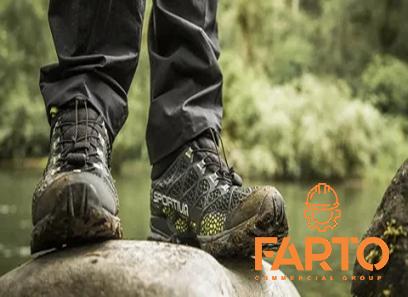
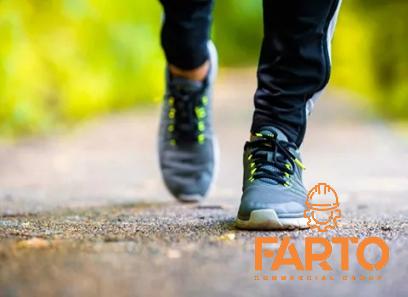

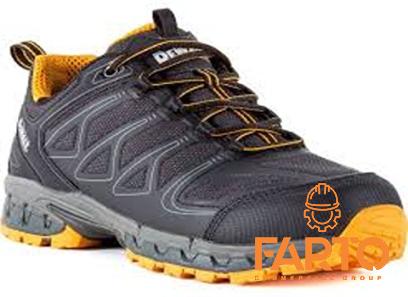



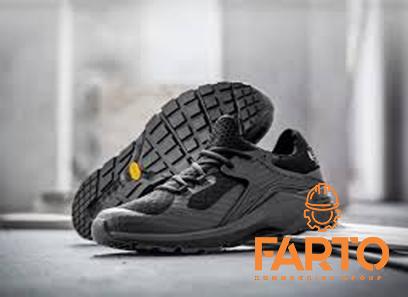
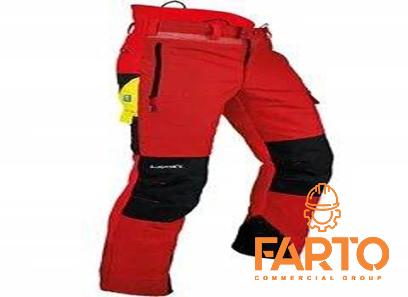
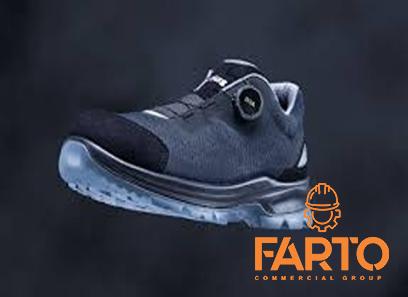
Your comment submitted.